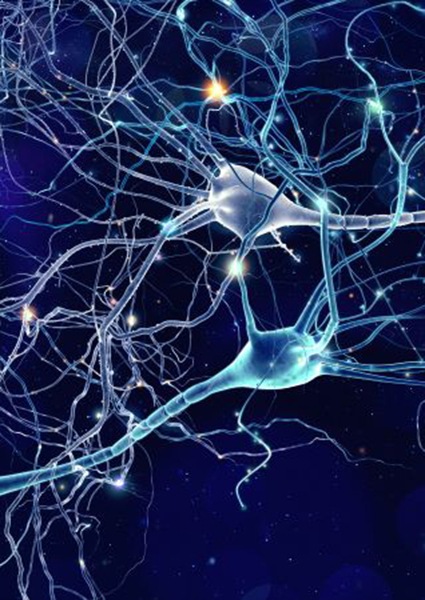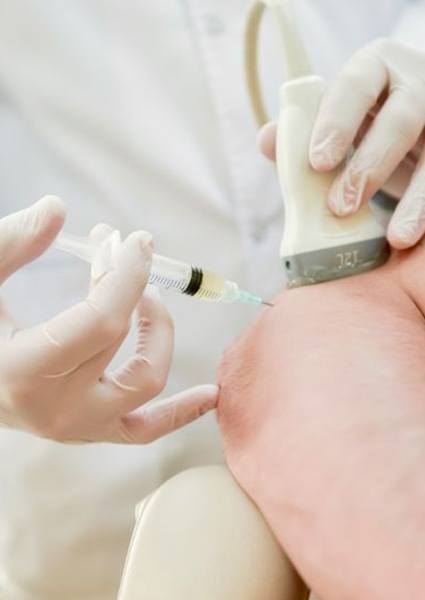Nerve Hydrodissection – Fort Lauderdale, FL
No More Trapped Nerve Pain!
Once nerves leave the spine, they have to travel between, around, and even through muscles while on their way to their destination. Unfortunately, when those muscles become too tight, possibly due to spasms or injuries, they can put pressure on nearby nerves. This reduces blood supply to the nerves and can cause a variety of symptoms, such as numbness, tingling, burning, and outright pain.
How can you get rid of the pain of trapped nerves? In some cases, physical therapy or massage is helpful. In other cases, further intervention is necessary. Here at the Institute for Non-Surgical Orthopedics in Fort Lauderdale, we are proud to offer peripheral nerve hydrodissection as one of our many treatments. Read on below to learn how it works, and then contact us if you believe it might be right for you.
Why Choose the Institute for Non-Surgical Orthopedics for Peripheral Nerve Hydrodissection?
- Experienced Orthopedic Team
- Fast, Non-Surgical Treatment
- Can Relieve Persistent Pain
What Is Peripheral Nerve Hydrodissection?

Peripheral nerve hydrodissection, often referred to simply as nerve hydrodissection, is a safe and relatively simple procedure. We inject a bit of fluid into the tissue around a nerve (but not INTO the nerve itself) to reduce pressure from nearby muscles. This separates the nerve from adjacent structures, such as the fascia, and helps it to function better. Essentially, the fluid provides a sort of “cushion” around the nerve. We use musculoskeletal ultrasound to ensure that our injections are precise.
How Does Nerve Hydrodissection Work?

The fluid we use for nerve hydrodissection is usually a combination of a substance known as D5W (5% dextrose dissolved in water) and a tiny amount of anesthetic. The diluted sugar helps to encourage your body’s healing processes and reduce inflammation in the nerve.
We may sometimes combine nerve hydrodissection with other treatments, such as platelet-rich plasma (PRP) to help patients enjoy optimum levels of healing and pain relief.
In most cases, nerve hydrodissection is either painless or causes minimal discomfort.
Many patients notice significant pain relief a few weeks after their appointment. More severe cases may require multiple appointments spread out over the course of months. In either case, we tend to see consistently good results with this treatment.
What Conditions Can Nerve Hydrodissection Treat?

Peripheral nerve hydrodissection is a viable treatment option for a range of conditions that involve trapped or pinched nerves. Here are some examples of specific conditions that we might recommend it for.
- Carpal tunnel syndrome
- Cubital tunnel syndrome
- Tarsal tunnel syndrome
- Thoracic outlet syndrome
- Sciatica
- Various types of joint pain
- Neck, shoulder, and upper back pain
During your consultation, our team can evaluate the specifics of your case and determine whether nerve hydrodissection is right for you. We want to design a treatment plan to reduce your pain and help you enjoy an improved quality of life!
Peripheral Nerve Hydrodissection FAQs

Peripheral nerve hydrodissection is not a hot topic among most people, so it is understandable if you have very little knowledge of it. Many people do not even know it exists! It is only normal, then, if you are eager to gather as much information about this treatment as possible before you visit our Fort Lauderdale orthopedics team for a consultation. Continue reading below to discover answers to some important FAQs. If your specific questions are not addressed here, give us a call. We will be pleased to speak with you!
Does Nerve Hydrodissection Have Any Risks?
Nerve hydrodissection is quite safe overall. Our team takes every precaution to minimize the risk of adverse outcomes. For example, we use advanced musculoskeletal ultrasound technology so we can place the fluid exactly where it needs to go in order to produce maximum benefits. It is also worth noting that the ingredients used in nerve hydrodissection injections are well-tolerated by the vast majority of patients.
Of course, it still must be acknowledged that no medical treatment is 100% risk-free. A small percentage of patients experience swelling and infection at their injection sites. If you ever suspect that you are having a severe adverse reaction to nerve hydrodissection, call us right away so we can help you resolve the problem.
Is There Any Downtime after a Nerve Hydrodissection Treatment?
No downtime is necessary after nerve hydrodissection treatment. In fact, you should be able to resume your normal activities immediately after your appointment.
Your injection site might be numb for a while after you leave our office because we use local anesthetic when performing nerve hydrodissection treatment. Once the numbness wears off, you might experience a slight ache around the injection site, which could stick around for a few days or longer.
When Will I Notice Results from Nerve Hydrodissection?
Every patient reacts differently to treatment. Some individuals notice a big reduction in pain within 2 – 3 weeks after their first nerve hydrodissection session. Others require multiple appointments spaced out across several months.
In order to provide pain relief as quickly as possible, we may combine nerve hydrodissection with other therapies.
Does Medical Insurance Cover Nerve Hydrodissection?
Peripheral nerve hydrodissection is well-accepted in the medical community as an effective way to address trapped nerves. Because of that, it is common for health insurance policies to cover it. Our practice accepts most types of medical insurance, and we will be happy to help you figure out how your benefits apply and file necessary claims.
If your insurance will not cover nerve hydrodissection for any reason, ask us about other payment options. We want you to fully understand the financial aspect of your care.









